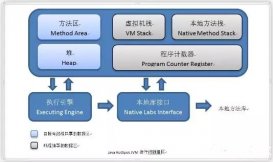lombok是一個可以幫助我們簡化java代碼編寫的工具類,尤其是簡化javabean的編寫,即通過采用注解的方式,消除代碼中的構造方法,getter/setter等代碼,使我們寫的類更加簡潔,當然,這帶來的副作用就是不易閱讀…不過,還是能看得懂吧,廢話不多說,先看一下lombok支持的一些常見的注解。
- @nonnull
- @cleanup
- @getter/@setter
- @tostring
- @equalsandhashcode
- @noargsconstructor/@requiredargsconstructor /@allargsconstructor
- @data
- @value
- @sneakythrows
- @synchronized
- @log
@nonnull
這個注解可以用在成員方法或者構造方法的參數前面,會自動產生一個關于此參數的非空檢查,如果參數為空,則拋出一個空指針異常,舉個例子來看看:
|
1
2
3
4
|
//成員方法參數加上@nonnull注解public string getname(@nonnull person p){ return p.getname();} |
實際效果相當于:
|
1
2
3
4
5
6
|
public string getname(@nonnull person p){ if(p==null){ throw new nullpointerexception("person"); } return p.getname();} |
用在構造方法的參數上效果類似,就不再舉例子了。
@cleanup
這個注解用在變量前面,可以保證此變量代表的資源會被自動關閉,默認是調用資源的close()方法,如果該資源有其它關閉方法,可使用@cleanup(“methodname”)來指定要調用的方法,就用輸入輸出流來舉個例子吧:
|
1
2
3
4
5
6
7
8
9
10
|
public static void main(string[] args) throws ioexception { @cleanup inputstream in = new fileinputstream(args[0]); @cleanup outputstream out = new fileoutputstream(args[1]); byte[] b = new byte[1024]; while (true) { int r = in.read(b); if (r == -1) break; out.write(b, 0, r); } } |
實際效果相當于:
|
1
2
3
4
5
6
7
8
9
10
11
12
13
14
15
16
17
18
19
20
21
22
|
public static void main(string[] args) throws ioexception { inputstream in = new fileinputstream(args[0]); try { outputstream out = new fileoutputstream(args[1]); try { byte[] b = new byte[10000]; while (true) { int r = in.read(b); if (r == -1) break; out.write(b, 0, r); } } finally { if (out != null) { out.close(); } } } finally { if (in != null) { in.close(); } }} |
是不是簡化了很多。
@getter/@setter
這一對注解從名字上就很好理解,用在成員變量前面,相當于為成員變量生成對應的get和set方法,同時還可以為生成的方法指定訪問修飾符,當然,默認為public,直接來看下面的簡單的例子:
|
1
2
3
4
5
6
7
8
9
10
11
|
public class programmer{ @getter @setter private string name; @setter(accesslevel.protected) private int age; @getter(accesslevel.public) private string language;} |
實際效果相當于:
|
1
2
3
4
5
6
7
8
9
10
11
12
13
14
15
16
17
18
19
20
21
|
public class programmer{ private string name; private int age; private string language; public void setname(string name){ this.name = name; } public string getname(){ return name; } protected void setage(int age){ this.age = age; } public string getlanguage(){ return language; }} |
這兩個注解還可以直接用在類上,可以為此類里的所有非靜態成員變量生成對應的get和set方法。
@tostring/@equalsandhashcode
這兩個注解也比較好理解,就是生成tostring,equals和hashcode方法,同時后者還會生成一個canequal方法,用于判斷某個對象是否是當前類的實例,生成方法時只會使用類中的非靜態和非transient成員變量,這些都比較好理解,就不舉例子了。
當然,這兩個注解也可以添加限制條件,例如用@tostring(exclude={“param1”,“param2”})來排除param1和param2兩個成員變量,或者用@tostring(of={“param1”,“param2”})來指定使用param1和param2兩個成員變量,@equalsandhashcode注解也有同樣的用法。
@noargsconstructor/@requiredargsconstructor /@allargsconstructor
這三個注解都是用在類上的,第一個和第三個都很好理解,就是為該類產生無參的構造方法和包含所有參數的構造方法,第二個注解則使用類中所有帶有@nonnull注解的或者帶有final修飾的成員變量生成對應的構造方法,當然,和前面幾個注解一樣,成員變量都是非靜態的,另外,如果類中含有final修飾的成員變量,是無法使用@noargsconstructor注解的。
三個注解都可以指定生成的構造方法的訪問權限,同時,第二個注解還可以用@requiredargsconstructor(staticname=”methodname”)的形式生成一個指定名稱的靜態方法,返回一個調用相應的構造方法產生的對象,下面來看一個生動鮮活的例子:
|
1
2
3
4
5
6
7
8
9
10
|
@requiredargsconstructor(staticname = "sunsfan")@allargsconstructor(access = accesslevel.protected)@noargsconstructorpublic class shape { private int x; @nonnull private double y; @nonnull private string name;} |
實際效果相當于:
|
1
2
3
4
5
6
7
8
9
10
11
12
13
14
15
16
17
18
19
20
21
22
23
|
public class shape { private int x; private double y; private string name; public shape(){ } protected shape(int x,double y,string name){ this.x = x; this.y = y; this.name = name; } public shape(double y,string name){ this.y = y; this.name = name; } public static shape sunsfan(double y,string name){ return new shape(y,name); }} |
@data/@value
呃!!
@data注解綜合了3,4,5和6里面的@requiredargsconstructor注解,其中@requiredargsconstructor使用了類中的帶有@nonnull注解的或者final修飾的成員變量,它可以使用@data(staticconstructor=”methodname”)來生成一個靜態方法,返回一個調用相應的構造方法產生的對象。這個例子就也省略了吧…
@value注解和@data類似,區別在于它會把所有成員變量默認定義為private final修飾,并且不會生成set方法。
@sneakythrows
這個注解用在方法上,可以將方法中的代碼用try-catch語句包裹起來,捕獲異常并在catch中用lombok.sneakythrow(e)把異常拋出,可以使用@sneakythrows(exception.class)的形式指定拋出哪種異常,很簡單的注解,直接看個例子:
|
1
2
3
4
5
6
7
8
9
10
11
|
public class sneakythrows implements runnable { @sneakythrows(unsupportedencodingexception.class) public string utf8tostring(byte[] bytes) { return new string(bytes, "utf-8"); } @sneakythrows public void run() { throw new throwable(); }} |
實際效果相當于:
|
1
2
3
4
5
6
7
8
9
10
11
12
13
14
15
16
17
18
19
|
public class sneakythrows implements runnable { @sneakythrows(unsupportedencodingexception.class) public string utf8tostring(byte[] bytes) { try{ return new string(bytes, "utf-8"); }catch(unsupportedencodingexception uee){ throw lombok.sneakythrow(uee); } } @sneakythrows public void run() { try{ throw new throwable(); }catch(throwable t){ throw lombok.sneakythrow(t); } }} |
@synchronized
這個注解用在類方法或者實例方法上,效果和synchronized關鍵字相同,區別在于鎖對象不同,對于類方法和實例方法,synchronized關鍵字的鎖對象分別是類的class對象和this對象,而@synchronized得鎖對象分別是私有靜態final對象lock和私有final對象lock和私有final對象lock,當然,也可以自己指定鎖對象,例子也很簡單,往下看:
|
1
2
3
4
5
6
7
8
9
10
11
12
13
14
15
16
17
18
|
public class synchronized { private final object readlock = new object(); @synchronized public static void hello() { system.out.println("world"); } @synchronized public int answertolife() { return 42; } @synchronized("readlock") public void foo() { system.out.println("bar"); }} |
實際效果相當于:
|
1
2
3
4
5
6
7
8
9
10
11
12
13
14
15
16
17
18
19
20
21
22
23
|
public class synchronized { private static final object $lock = new object[0]; private final object $lock = new object[0]; private final object readlock = new object(); public static void hello() { synchronized($lock) { system.out.println("world"); } } public int answertolife() { synchronized($lock) { return 42; } } public void foo() { synchronized(readlock) { system.out.println("bar"); } } } |
@log
這個注解用在類上,可以省去從日志工廠生成日志對象這一步,直接進行日志記錄,具體注解根據日志工具的不同而不同,同時,可以在注解中使用topic來指定生成log對象時的類名。不同的日志注解總結如下(上面是注解,下面是實際作用):
|
1
2
3
4
5
6
7
8
9
10
11
12
13
14
|
@commonslogprivate static final org.apache.commons.logging.log log = org.apache.commons.logging.logfactory.getlog(logexample.class);@jbosslogprivate static final org.jboss.logging.logger log = org.jboss.logging.logger.getlogger(logexample.class);@logprivate static final java.util.logging.logger log = java.util.logging.logger.getlogger(logexample.class.getname());@log4jprivate static final org.apache.log4j.logger log = org.apache.log4j.logger.getlogger(logexample.class);@log4j2private static final org.apache.logging.log4j.logger log = org.apache.logging.log4j.logmanager.getlogger(logexample.class);@slf4jprivate static final org.slf4j.logger log = org.slf4j.loggerfactory.getlogger(logexample.class);@xslf4jprivate static final org.slf4j.ext.xlogger log = org.slf4j.ext.xloggerfactory.getxlogger(logexample.class); |
關于lombok的注解先寫到這里,當然,還有其他一些注解需要大家自己去摸索,同時lombok一直在擴展,將來肯定會加入更多的注解元素,拭目以待了。
以上就是本文的全部內容,希望對大家的學習有所幫助,也希望大家多多支持服務器之家。
原文鏈接:https://blog.csdn.net/sunsfan/article/details/53542374













